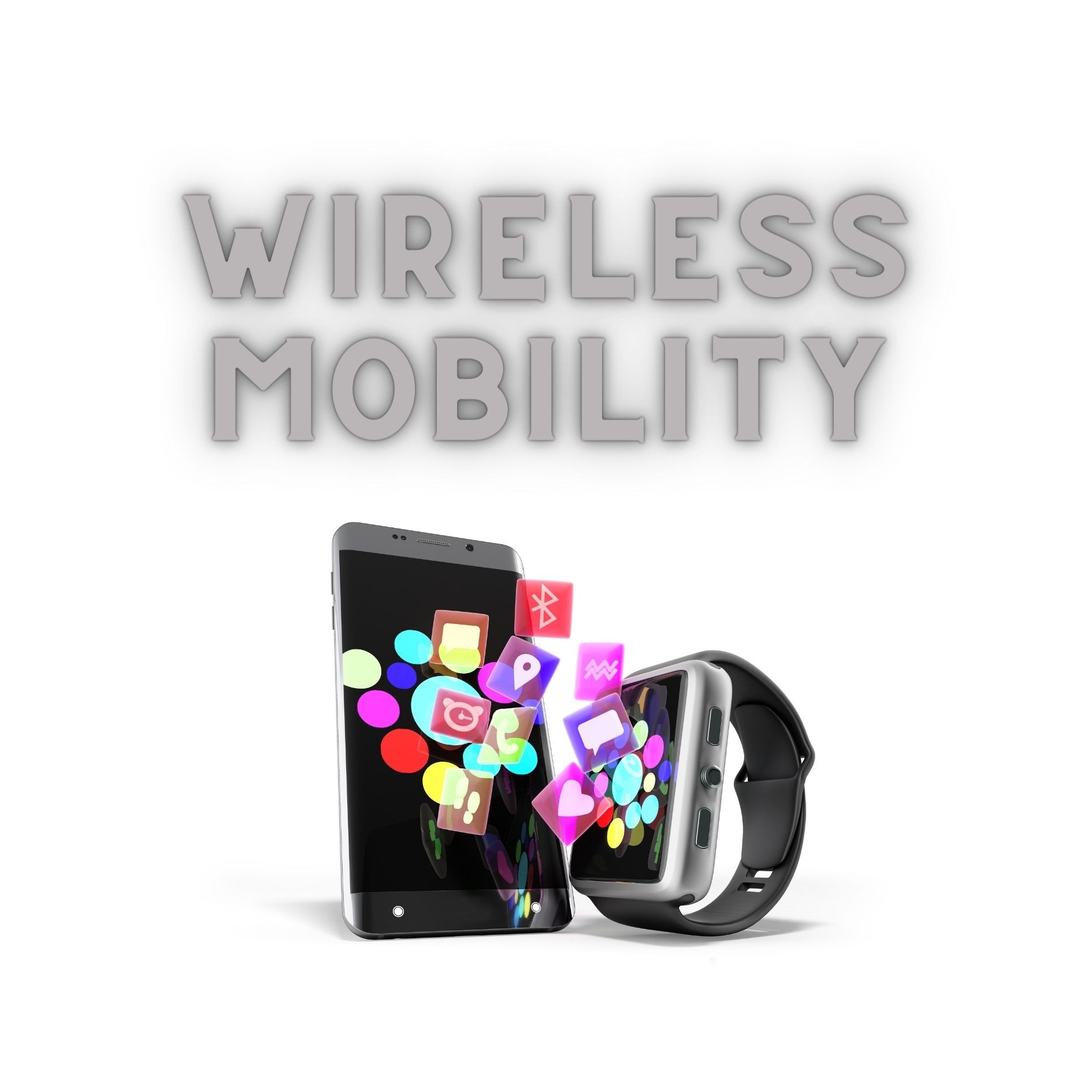Introduction:
In a world that thrives on connectivity and instant access to information, wireless mobility has become an indispensable part of our daily lives. From smartphones to laptops and wearable devices, our ability to move while staying connected to the digital world has transformed the way we live, work, and communicate. However, with the advantages of wireless mobility comes its own set of challenges. This comprehensive blog post aims to delve deep into the world of wireless mobility. We will explore the various aspects, describe the common problems faced by customers, and provide practical solutions and suggestions to ensure you make the most of this technology.
Understanding Wireless Mobility:
Wireless mobility is a concept that encompasses the seamless integration of devices and networks to provide internet connectivity and communication on the move. It empowers individuals to remain connected regardless of their location, which has far-reaching implications for both personal and professional life.
At the core of wireless mobility are various wireless communication networks, including cellular (3G, 4G, and the ever-evolving 5G), Wi-Fi, Bluetooth, and satellite connections. These networks eliminate the need for physical connections, offering a level of flexibility and convenience that wired networks can’t match.
Mobile devices, such as smartphones, tablets, laptops, and wearables, are the critical enablers of wireless mobility. These devices allow users to access the internet, send messages, make calls, and run countless applications while on the go.
Roaming is another vital aspect of wireless mobility. It ensures continuous connectivity as users move across different wireless networks. For example, when you travel with your mobile phone, it can seamlessly switch between various cellular networks, ensuring you stay connected even when you leave your home network’s coverage area.
Data and communication are central to wireless mobility. Beyond voice calls, users can transfer data, including internet browsing, email, and various messaging applications, regardless of their location. This capability has made wireless mobility an invaluable tool for modern life.
Challenges and Solutions:
Despite the myriad benefits of wireless mobility, customers often face a range of challenges:
1. Network Connectivity Issues:
a. Dropped calls and slow data speeds can be frustrating. To overcome this, consider choosing a wireless service provider with better network coverage in your area.
b. Use signal booster devices to enhance connectivity in areas with weak signals.
c. Report connectivity problems to your service provider, as they may be able to address local network issues.
2. Battery Life:
a. The limited battery life of mobile devices can be a constant concern. Mitigate this issue by carrying a portable charger or power bank.
b. Adjust your device’s settings to conserve battery life, such as reducing screen brightness or turning off background apps.
c. Invest in devices with larger batteries or more efficient power management.
3. Data Security and Privacy:
a. Wireless mobility exposes users to security and privacy risks. Protect yourself by installing reputable antivirus and security apps on your mobile devices.
b. Regularly review and update privacy settings and app permissions to control the data you share.
c. Educate yourself on best practices for online security, including creating strong, unique passwords and avoiding public Wi-Fi for sensitive tasks.
4. Roaming Charges:
a. International travel often results in exorbitant roaming charges. Before heading abroad, inquire about cost-effective international plans or add-ons from your wireless provider.
b. Use Wi-Fi networks and messaging apps to reduce reliance on cellular data and calls while overseas.
c. Consider using local SIM cards when traveling to avoid international roaming charges.
5. Device Compatibility and Interoperability:
a. Older devices may not support the latest wireless standards, leading to performance and compatibility issues. Consider upgrading to devices that support the latest standards.
b. Keep your device’s software up to date to benefit from improvements in performance and compatibility.
c. Stay informed about industry standards and advancements to make informed decisions when upgrading devices.
Conclusion:
In conclusion, in an era defined by connectivity and mobility, wireless technology has emerged as a transformative force. While it empowers us with unprecedented convenience and flexibility, it also presents challenges that demand attention and solutions. This comprehensive guide has shed light on the significant issues faced by customers in the realm of wireless mobility and provided actionable solutions to enhance the mobile experience. As technology continues to evolve, staying informed and proactive is crucial to making the most of wireless mobility’s benefits.
Suggested action items include network optimization, prudent battery management, vigilance in data security, exploring international plans, and considering device upgrades. By adopting these strategies, individuals can navigate the wireless mobility landscape effectively, ensuring a seamless and secure experience.
Suggestions:
1. Stay Informed: Keep up with the latest advancements in wireless technology, such as 5G rollout and IoT developments. This knowledge will empower you to leverage emerging opportunities.
2. Choose the Right Provider: Research and choose a wireless service provider that offers the best network coverage in your area. A reliable provider can significantly reduce connectivity issues.
3. Battery Management: Invest in portable chargers or power banks and learn to manage your device’s battery effectively. Adjust settings and limit background processes to extend battery life.
4. Data Security: Install reputable antivirus and security apps on your mobile devices to protect against malware and other threats. Regularly review and update privacy settings and app permissions.
5. Roaming Strategies: Before travelling internationally, explore cost-effective international plans and alternatives to reduce roaming charges. Use Wi-Fi networks and messaging apps to minimize data and call expenses.
6. Device Upgrades: Consider upgrading your devices to those that support the latest wireless standards, ensuring better compatibility and performance. Keep your device’s software up to date.
In summary, wireless mobility is a dynamic and transformative force in our lives, and understanding its intricacies is essential for maximizing the advantages it offers. With the right tools and knowledge, individuals can navigate the wireless mobility landscape with confidence, ensuring that they remain connected and secure in an increasingly mobile world.
Visit our website to know more!
Follow us on LinkedIn:


